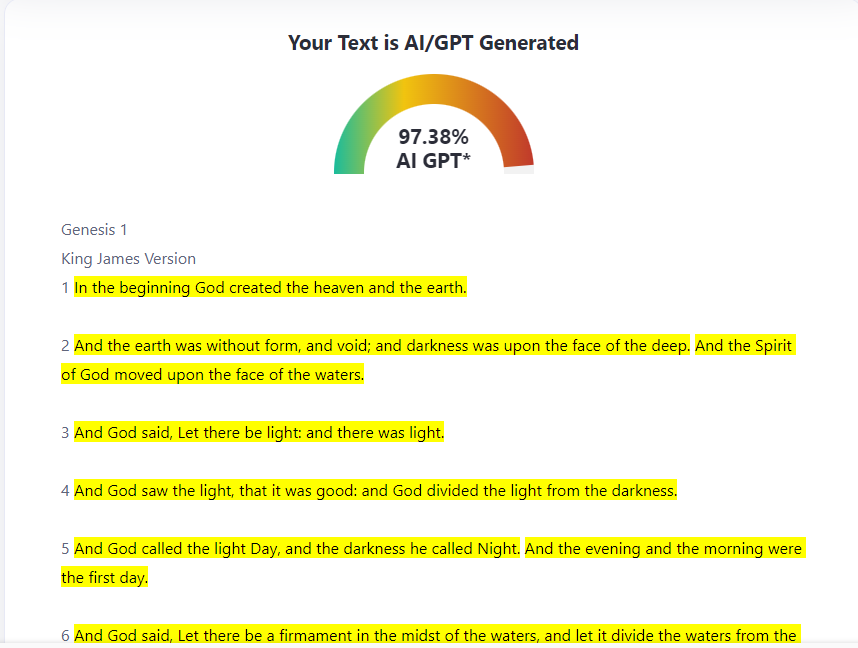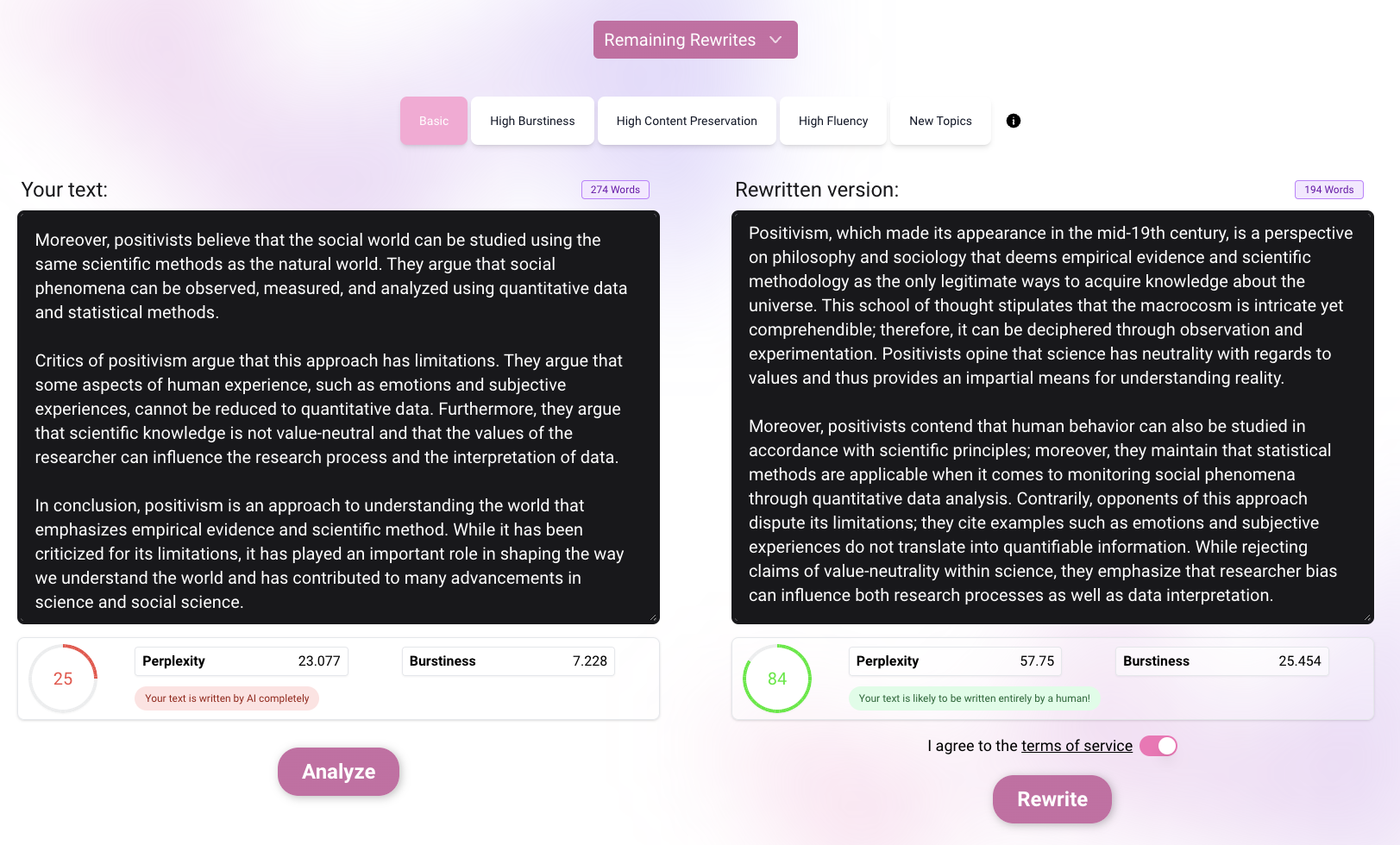- Published on
- Reading time 6 min read
How do AI Detectors like GPTZero Work?
- Authors

- Name
- Art Morozov

Artificial Intelligence has significantly infiltrated our daily lives, creating a necessity to understand its inner workings. To make this task simpler, we'll delve into two main concepts integral to AI's functioning: Perplexity and Burstiness. These two metrics offer a profound understanding of how tools like GPTZero and Turnitin detect AI-generated content.
How can AI generated text be detected?
In the rapidly evolving landscape of artificial intelligence, the detection of AI-generated text has become a hot topic. Several tools have been developed to accomplish this, including GPTZero and Turnitin, which aim to identify telltale signs of AI authorship. By examining certain key features within a piece of writing, such as the predictability of word choice (perplexity) and the uniformity of sentence structure (burstiness), these detectors attempt to discern whether a text was composed by a human or an AI. It's a complex process, fraught with its own set of challenges and limitations.
What is Perplexity?
Perplexity is a measure used to determine the performance of language models, specifically their ability to predict the next word in a sequence. AI-generated text is procedurally generated word-by-word. The AI selects the next probable word in a sentence from a predefined number of weighted options.
Essentially, Perplexity is founded on the concept of entropy, representing the amount of chaos or randomness in a system. A lower perplexity score indicates a more accurate model in predicting the next word in a given sequence, signifying better generalization and performance. On the contrary, a higher perplexity score implies a less accurate prediction, making the model less reliable.
The principle of Perplexity becomes more apparent when we consider an example. How do you suppose the following sentence should end?
"I picked up the kids and dropped them off at..."
A language model with high perplexity might suggest nonsensical options like "icicle," "pensive," or "luminous." However, a model with low perplexity is likely to predict plausible endings like "school" or "the pool."
Perplexity is widely used in Natural Language Processing (NLP) tasks such as speech recognition, machine translation, and text generation, where the most predictable option is often the correct answer.
What is Burstiness?
Burstiness measures the predictability of content based on the homogeneity of sentence length and structure throughout the text. Similar to how perplexity relates to words, burstiness relates to sentences.
Burstiness represents the variance in sentence lengths, structures, and rhythms. Human writing tends to vary, with alternating bursts and lulls, long sentences or short ones, depending on our interest in the topic at hand. Conversely, AI displays a more uniform and regular pattern, lacking the creative spontaneity characteristic of human writing.
Limitations of AI Detection
While AI detectors like GPTZero and Turnitin have made significant strides in identifying machine-generated content, it's important to note that there are still considerable limitations to these detection methods. A key critique lies in the use of perplexity as a marker for AI-generated text.
In traditional Natural Language Processing (NLP) tasks, low perplexity is often associated with high-quality text. This is because low perplexity indicates that a language model can accurately predict the next word in a sequence, thus producing coherent and contextually appropriate content. This model of perplexity is highly effective in tasks such as machine translation, speech recognition, and, of course, text generation, where predictability is often synonymous with quality.
However, in the realm of AI detectors, low perplexity has been flipped on its head and is instead used as a marker for AI-generated text. This paradoxical use of perplexity introduces a considerable challenge. If AI-generated text is inherently of high quality due to low perplexity, then marking it as AI-generated based on this low perplexity presents a contradiction. After all, the ultimate goal of AI text generation is to mimic human language as closely as possible. If an AI is successful in achieving low perplexity, it means that it's producing high-quality, human-like text.
A telling example of this limitation surfaced on a Reddit discussion where a user highlighted an intriguing case. They pointed out that a verse from the Bible was marked as AI-generated by an AI detector.

This example underscores the risk of false positives when using low perplexity as the sole marker for AI-generated content.
This use of perplexity as a detection marker also fails to account for the fact that not all high-quality, low-perplexity text is machine-generated. Skilled human writers often produce content with low perplexity because they write in a way that is predictable and easy to follow. Moreover, varying writing styles and genres can naturally result in different levels of perplexity. For instance, academic writing or technical documentation might be more predictable (and thus lower in perplexity) than a creative novel or a piece of poetry. By solely relying on low perplexity as an indicator of AI generation, we risk misclassifying high-quality human writing as machine-generated.
How to Bypass AI Detectors?
As the digital world becomes increasingly AI-driven, with automated language models generating content that rivals human authorship, the question on many minds is, "How can we bypass AI detectors?" Whether you're a content creator leveraging AI tools for productivity, an academic researcher exploring the edges of AI text generation, or a student looking to optimize time spent on assignments, bypassing AI detectors could be crucial.
In the bustling industry of AI content generation, one solution is rapidly rising to prominence: GPTNinja.

This cutting-edge tool can rewrite your text, making it undetectable by AI detectors such as GPTZero and Turnitin. By blending the best of AI technology and human creativity, GPTNinja offers an intriguing solution for individuals and businesses alike.
GPTNinja works by optimizing the perplexity and burstiness of your text. This means it can help your writing escape the "robotic" patterns that AI detectors are trained to identify. It uses advanced AI algorithms to diversify sentence structures and word choices, making your content appear more "human-like" and less predictable to AI detectors.
However, it's important to remember that bypassing AI detectors isn't just about escaping detection—it's about improving the quality of your content. The same techniques that make your text more human-like, such as varying sentence lengths and using a wide range of vocabulary, also make your content more engaging and appealing to human readers.
With AI reshaping the education industry and changing the landscape of content creation, tools like GPTNinja are playing an increasingly important role. They empower users to harness the power of AI while maintaining a distinctly human touch in their writing. They can help mitigate the burden of 'busy work' assignments and pave the way for a more interactive, engaging learning environment.
Conclusion
While AI detection tools continue to improve, so too do the methods for bypassing them. With tools like GPTNinja, the power of AI can be harnessed to create high-quality, engaging content that flies under the radar of AI detectors. As we navigate this AI-driven world, it's clear that the future of content creation is not just about AI or humans—it's about the collaboration between the two.